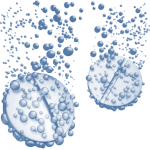Hyaluronic Acid-Coated Niosomes: A Promising Drug Delivery System with Potential Applications
Krutisha Ajit Rane, Jameel Ahmed S Mulla
Abstract:
Targeted drug delivery is a critical strategy to enhance drug efficacy while minimizing side effects. Niosomes, a versatile drug carrier system, have gained prominence in this field. Niosomes, constructed from non-ionic surfactants and cholesterol, create minute lamellar formations, providing a mechanism for the encapsulation of both hygroscopic and oleopobic drugs. These structures exhibit numerous advantages, including biocompatibility, stability, and the ability to protect labile drugs. Hyaluronic acid (HA), a natural biopolymer, is valuable in drug delivery vehicles because of its biologically inert, decomposable, and site-specificity. HA is widely distributed in the body and has significant roles in various cellular processes, making it an attractive component for drug carriers. Furthermore, HA enhances drug permeation, with its effectiveness influenced by molecular weight. HA-coated niosomes have shown promise in various applications. In ocular drug delivery, they improve bioavailability by extending drug retention in the eye, overcoming the limitations of traditional eye drops. In the treatment of inflammation, these niosomes exhibit sustained anti-inflammatory effects, offering a potential solution for addressing inflammatory conditions. For anticancer drug delivery, CD44-targeted nanoparticles designed with HA enhance drug delivery efficiency to cancer cells, showing increased cytotoxicity and tumor growth inhibition. This review underscores the potential of HA-coated niosomes as a groundbreaking approach in advanced drug delivery. Their adaptability and ability to combine the strengths of niosomes and HA hold significant promise across diverse therapeutic domains, including ophthalmology, inflammation, and cancer treatment. This synergy represents a significant step toward personalized medicine and improved patient outcomes.
Keywords: Bilayer, Niosomes, Surfactants, Hyaluronic Acid, Transdermal Penetration.



